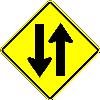Global Navigation

Main Navigation
Sub-Navigation

Content
So what does traction do for us? Why is traction such a concern to us? Because there is a limited amount of traction available to us, we must understand how that traction is used. That's where the ABC's of traction come in. There are three distinct consumers of traction when we ride. Traction is used for Accelerating, Braking and Cornering. In the first article, we said we'd look at each of these individually. This article will explore accelerating force.
Understanding what traction is and how it is used is the first step towards managing our traction. The challenge is that our available traction comes from the friction between those two little areas of contact where our tires actually meet the road. All of these traction users must vie for their traction needs from the same pool of available traction, namely that generated by those two little contact patches. And any of the three traction users can acquire an appetite that eats up all of our available traction. This is especially true when we are riding under less than desirable conditions like when riding on a wet road surface.

Accelerating force is the most unique of the three traction-eating forces we must manage in that it is only experienced on the rear tire. The other two traction gobblers affect both tires. When we ease out the clutch, we apply the power of the engine through the transmission to the belt, chain or shaft. As that power is felt on the rear wheel, it begins to turn counterclockwise. Because there is friction between the rear tire and the road, our bike is moved forward.
Sidebar
Footer
Copyright 1996-2015 Chuck Miles All Rights Reserved
All information on this site, including all articles, are copyrighted materials belonging to Chuck Miles.
Design: Made in Austria | Author: G. Wolfgang



